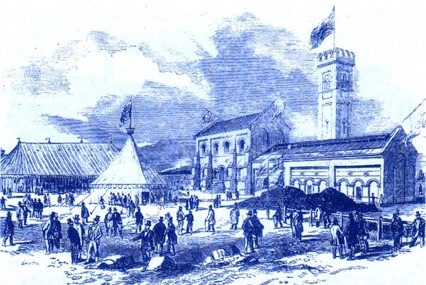Welcome to our comprehensive guide on rainwater harvesting and its untapped potential in London. In this article, we will explore the benefits, implementation, and future prospects of this sustainable water management solution. As concerns about water scarcity and environmental conservation grow, rainwater harvesting presents a viable and eco-friendly alternative to traditional water sources. Join us as we uncover the liquid gold that rains down upon us, waiting to be harnessed for various purposes.
The Need for Sustainable Water Management
Water scarcity is a pressing global issue, and London is no exception. With a growing population and unpredictable weather patterns, ensuring a reliable water supply becomes paramount. Traditional water sources, such as reservoirs and underground aquifers, are under increasing strain. Additionally, the energy-intensive processes involved in water treatment and distribution contribute to carbon emissions.
The Solution: Rainwater Harvesting Explained
Rainwater harvesting involves the collection and storage of rainwater for future use. It is a simple yet effective method that can be implemented in both residential and commercial settings. By capturing rainwater from rooftops and other surfaces, it can then be treated and utilized for various non-potable purposes, such as watering gardens, flushing toilets, and even for certain industrial processes.
Benefits of Rainwater Harvesting
- Water Conservation: Rainwater harvesting reduces reliance on traditional water sources, easing the burden on reservoirs and groundwater supplies.
- Cost Savings: By utilizing rainwater, households and businesses can significantly reduce their water consumption, leading to lower water bills.
- Environmental Impact: Rainwater harvesting promotes sustainable water management by reducing the energy consumption and carbon emissions associated with water treatment and distribution.
- Flood Mitigation: By capturing rainwater, the risk of floods and stormwater runoff can be minimized, alleviating pressure on urban drainage systems.
- Water Quality: Rainwater is naturally soft and free from the chemicals typically found in treated water, making it suitable for certain applications without the need for additional treatment.
Implementing Rainwater Harvesting Systems
Assessing Feasibility and Designing a System
Before embarking on a rainwater harvesting project, it is essential to assess the feasibility and design a system that meets your specific needs. Factors to consider include rainfall patterns, available roof space, and intended uses for the harvested water. Consulting with a professional rainwater harvesting specialist can ensure an optimal system design.
Components of a Rainwater Harvesting System
A typical rainwater harvesting system consists of the following components:
- Catchment Area: This includes rooftops, paved surfaces, and other areas where rainwater can be collected.
- Gutters and Downspouts: These direct rainwater from the catchment area into the storage tanks.
- Leaf Diverters and Filters: These prevent debris and contaminants from entering the storage tanks.
- Storage Tanks: Rainwater is stored in tanks or cisterns, which can be above-ground or underground, depending on available space.
- Pumps and Treatment Systems: If the harvested water is intended for non-potable use, treatment systems can be installed to ensure its quality. Pumps are used to distribute the water to the desired locations.
Maintenance and Safety Considerations
Regular maintenance is crucial to ensure the efficiency and longevity of a rainwater harvesting system. This includes cleaning filters, inspecting storage tanks for leaks, and monitoring water quality. It is also important to implement safety measures, such as mosquito-proofing tanks and preventing cross-contamination with the potable water supply.
Rainwater Harvesting in London: Opportunities and Challenges
Policy and Incentives
The London government recognizes the importance of sustainable water management and has implemented policies and incentives to encourage rainwater harvesting. The Greater London Authority provides guidance on rainwater harvesting systems, and certain boroughs offer grants and rebates for system installations. However, there is still untapped potential for further promotion and integration of rainwater harvesting in the city.
Public Awareness and Education
Raising public awareness about the benefits of rainwater harvesting is crucial for its widespread adoption. Educational campaigns, workshops, and community initiatives can play a significant role in promoting understanding and encouraging individuals and businesses to embrace this eco-friendly practice.
Architectural Integration
Architects and urban planners can incorporate rainwater harvesting systems into new building designs and urban infrastructure. Integrating rainwater collection into green spaces, public buildings, and residential developments can maximize the potential for rainwater utilization in London.
The Future of Rainwater Harvesting in London
As the need for sustainable water management intensifies, the future looks promising for rainwater harvesting in London. With advancements in technology, such as smart monitoring systems and innovative storage solutions, the efficiency and effectiveness of rainwater harvesting systems will continue to improve. Furthermore, collaborations between government bodies, water utilities, and private stakeholders can drive the integration of rainwater harvesting into mainstream water management practices.
Conclusion
Rainwater harvesting is a sustainable solution that holds immense untapped potential in London. By harnessing the power of rain, we can alleviate the strain on traditional water sources, reduce costs, and minimize our environmental impact. Through proactive policies, public education, and architectural integration, we can unlock the true value of liquid gold and pave the way for a water-resilient future in the city. Embrace rainwater harvesting today and join us in preserving this precious resource for generations to come.
